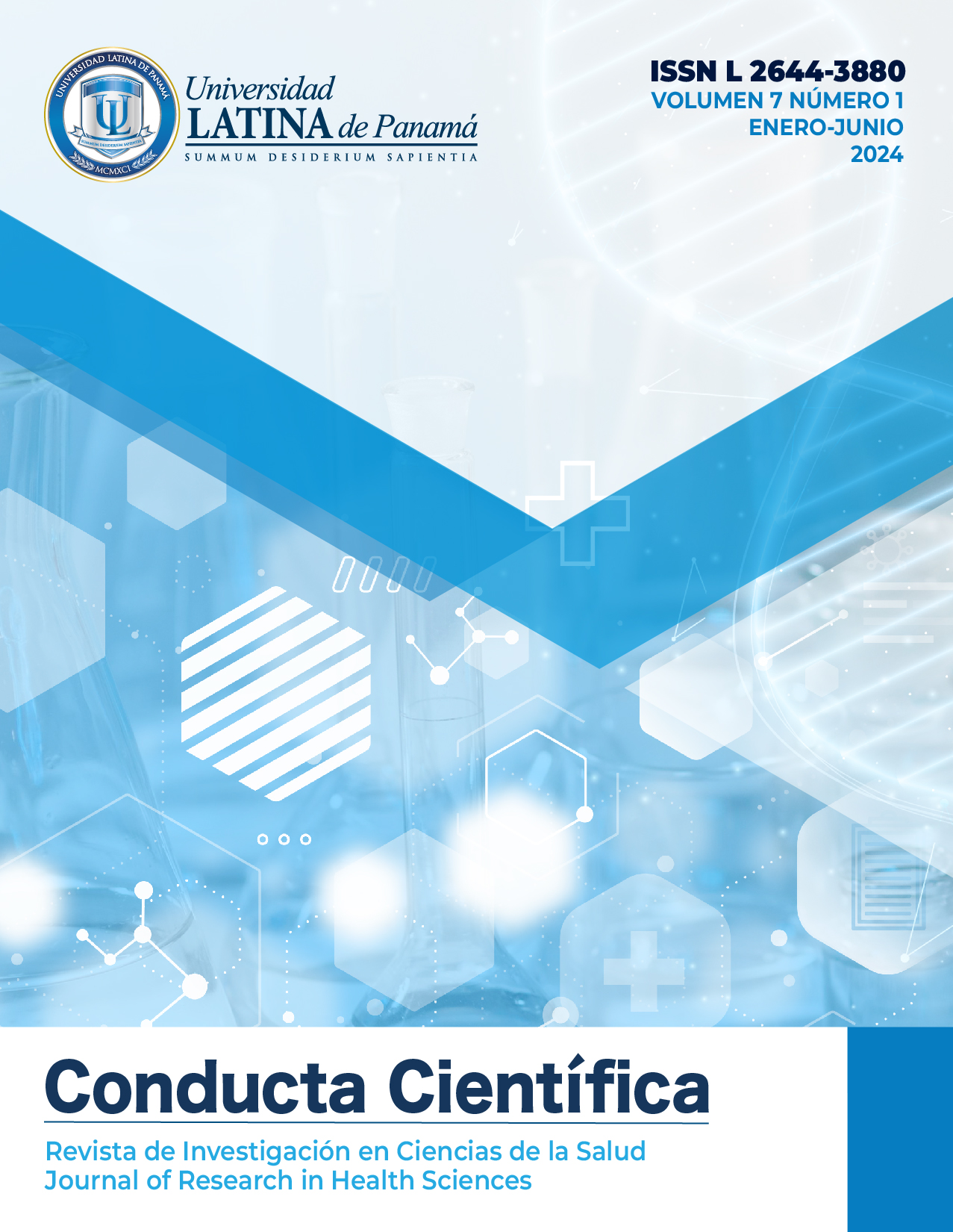STYLES OF LOVE IN NON-MONOGAMOUS RELATIONSHIPS IN 20 TO 30 YEAR OLD PSYCHOLOGY STUDENTS INTERAMERICAN UNIVERSITY OF PANAMA 2023
Keywords:
Love style, infidelity, non-monogamous relationships, polyamory, systemic psychologyAbstract
The purpose of this study is to identify the love styles in non-monogamous relationships in university students of the Bachelor's Degree in Psychology of the Inter-American University of Panama, with an age range of 20 to 30 years and of both sexes. Enrolled in the period of the second semester of 2023, the student population in the Bachelor's Degree in Psychology is four hundred and seventy (470) students. For the development of this research, a population sample of two hundred and twelve (212) students is used, in which the Love Attitudes Scale (LAS) of Hendrick & Hendrick (1986) (Clyde Hendrick, 1986) and the Triangular Scale of Love of Sternberg (1986) (Sternberg R. J., 1986) were applied, through the Google Forms tool, it was obtained that there is a greater predominance of the Eros attitude with a higher percentage of 38.12% of the love that is not present in their relationships is the ludos attitude with 45.15%. In relation to the Theory of Types of Love (Lee 1973) (Lee, 1973). In relation to Sternberg's (1986) Triangular Theory of Love (Sternberg R. J., 1986), the predominant component is Intimacy with 41.73% and the Passion component with less relevance in their relationships is 31.51%. It is concluded that the students would not be part of a non-monogamous relationship. This can be determined by the Ludos attitude, this attitude is the one that is associated with openness or practices that include practices or behaviors associated with non-monogamous relationships or as polyamory is commonly known "open relationships". Students are determined by the intense feelings attached to the attraction or physical appearance of Eros.
References
Aleida Isabel Blandón-Hincapié, L. M.-S. (2014 p.224). Comprensiones sobre pareja en la actualidad: Jóvenes en busca de estabilidad. Colombia: Revista Latinoamericana de Ciencias Sociales, Niñez y Juventud, vol. 14, núm. 1, pp. 505-517, 2016.
Alejandra Zuluaga Zuluaga, I. C. (2018). Puntualizaciones del Amor: nuevas interpretaciones y paradigmas. Medellín: Editorial Universidad Pontificia Bolivariana, 2018.
Álvarez, L. S. (2018). El Poliamor como Como Construcción Amorosa Dialogada. Obtenido de http://repositorio.ual.es/bitstream/handle/10835/7062/TFM_SANTIAGO%20ALVAREZ%2c%20LAURA.pdf?sequence=1&isAllowed=y
Anapol, D. D. (1997). Polyamory: The New Love Without Limits: Secrets of Sustainable Intimate Relationships. Estados Unidos: Intinet Resource Center.
Beatriz de Mizrachi, E. P. (2004). Instituto Panameño de Terapia Familiar y de Pareja. Obtenido de Instituto Panameño de Terapia Familiar y de Pareja: https://www.iptfp.com/
Bordignon, N. A. (2005). El desarrollo psicosocial de Erick Erickson. El diagrama epigenético del adulto. Lasallista de Investigación Vol.2, 57.
Camacho, J. M. (2004). Fidelidad e Infidelidad en las Relaciones de Pareja.
Clyde Hendrick, S. H. (1986). A theory and method of love. Journal of personality and social psychology. En S. H. Clyde Hendrick, A theory and method of love. Journal of personality and social psychology (págs. 392-402). Estados Unidos : American Psychological Association (APA).
George., R. M. (2018.). Estadísticas Informes de causas consecuencias de la ruptura del matrimonio que termina en divorcio y efectos que causan a la familia. https://revista.isaeuniversidad.ac.pa/index.php/EIL/article/view/36/33, 3.
Lee, J. A. (1973). The Colors of Love. Estados Unidos : New Press.
Lipton, D. B. (2003). El Mito de la Monogamía. Madrid: SIGLO XXI DE ESPANA EDITORES S.A.
REPÚBLICA, C. G. (2022). CIFRAS PRELIMINARES DE MATRIMONIOS Y DIVORCIOS EN LA REPÚBLICA: AÑO 2022. Panamá: https://www.inec.gob.pa/archivos/A0705547520230502114529Cuadro%20de%20Matrimonios%20y%20Divorcios%202022%20(P).pdf.
Sternberg, R. J. (1986). A Triangular Theory of Love. Estados Unidos: America Psychological Association. Inc.
Villegas, M. (2012). La dimensión estructural y evolutiva en las relaciones de pareja. Madrid, España: Acción Psicológica, vol. 9, núm. 2.
Downloads
Published
How to Cite
Issue
Section
License
El contenido de las publicaciones son responsabilidad absoluta de los autores y no de la Universidad ni de la revista Conducta Científica, que es editada por la Universidad Latina de Panamá. La revista permite a los autores mantener el derecho de autor sobre los articulos y documentos publicados mediante el uso de la siguiente licencia.
Los artículos se publican con una licencia https://creativecommons.org/licenses/by-nc-sa/4.0/deed.es
Bajo los siguientes términos:
-
Atribución — Usted debe dar crédito de manera adecuada, brindar un enlace a la licencia, e indicar si se han realizado cambios. Puede hacerlo en cualquier forma razonable, pero no de forma tal que sugiera que usted o su uso tienen el apoyo de la licenciante.
-
NoComercial — Usted no puede hacer uso del material con propósitos comerciales.
-
CompartirIgual — Si remezcla, transforma o crea a partir del material, debe distribuir su contribución bajo la misma licencia del original.



